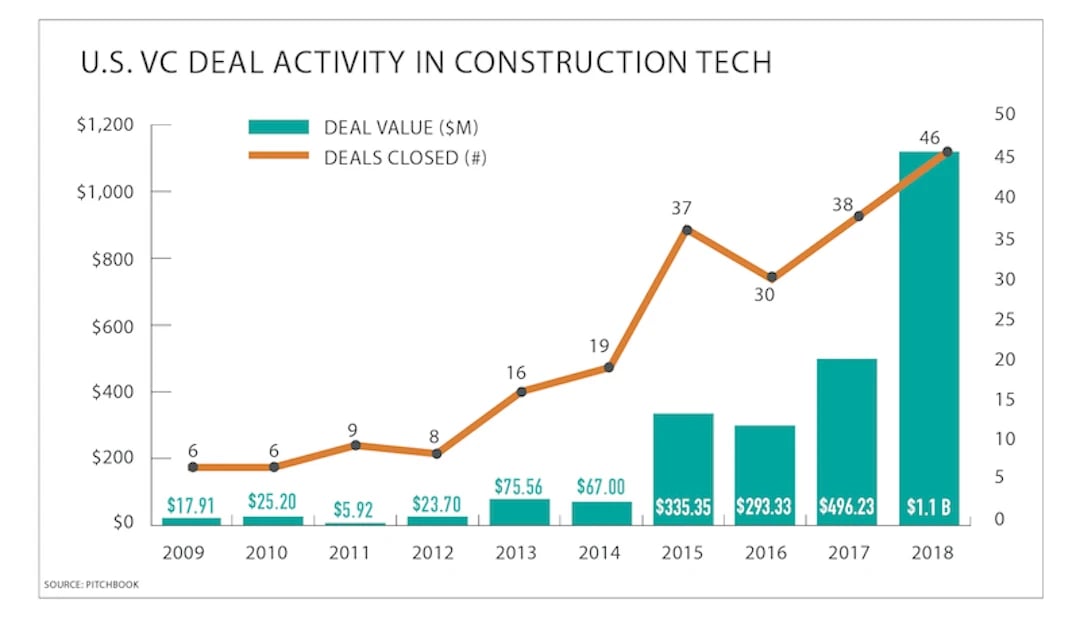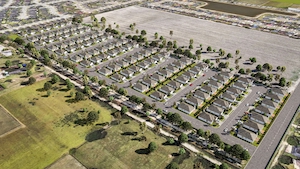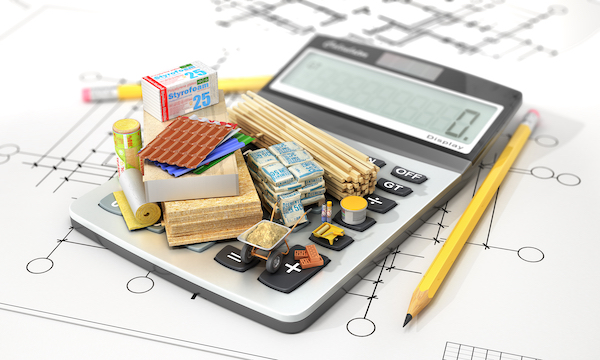3-D Printed Houses - A Solution to the Growing Housing Affordability Crisis?
Labor shortages, exorbitant construction costs, supply chain disruptions, tariffs, inflation, affordable housing shortages - they're all present realities.
And it seems like the only solutions being offered are some flavor of increased government meddling - it's a not so ironic paradox - they want more government to fix the problems government created in the first place. You know, the classic self-fulfilling prophecy.
If you pick up any newspaper or substack, you’re likely to find that the sky is falling, and that it's happening tomorrow, because that's what generates clicks. And when you're inundated with bad news all the time, it's easy to get worked up and channel your energy unproductively. Especially because the issues we are dealing with are real, affecting the lives of real, everyday people.
But there is some good news in all of this. Market inefficiencies create opportunities for disruption and innovation. Entrepreneurs identify friction points and exploit those inefficiencies by delivering products and services that create less expensive, more effective outcomes. And that's what's happening now in the real estate and construction industries, and it's long overdue.
So instead of another newsletter mired with gloom and doom, we're going to focus on some positive news.
Contech investment has dramatically increased the past few years
They say that if you're wondering where the next wave of significant technological advancement will happen, you need to follow the venture capital money. There's been a massive uptick in contech investment over the last 5 years - a trend that was only accelerated by the pandemic, changing personal and work habits, and associated supply chain disruptions.

Sometimes markets adapt naturally – consumers get so sick of the same tired products and strategies that they decide to go out and create the change themselves. Other times, a shock to the economic system acts as a forcing function for that change, which happens drastically. This current cycle has been a combination of both.
But let's face it, for the last 40 years, the construction business has lacked significant technological advancement – it’s an antiquated business model and delivery method that’s ripe for disruption. Unfortunately, it's only been since the Great Recession and labor crunch of the last half-decade that we are allowed to talk about the industry’s shortcomings.
But today, innovators are challenging that status quo, and they’re backed by funding that’s chasing technology aimed at taking some of the burden off the industry’s current business model. New technology like construction robotics, automated bid and construction estimation software, and more efficient labor and product procurement systems will help streamline the construction process and improve productivity.
Unfortunately, most technology funded now is still a couple of years out from hitting the mainstream market because of the typical lifecycle of a startup. There is, however, technology right on our doorstep that has the potential to change homebuilding forever.
Building pioneer ICON made a splash in Austin a few weeks ago by announcing the first-ever large-scale 3D printed home community in partnership with Lennar. It’s momentous because although the technology has existed for a couple of years, the project marks the first time the concept and delivery are tested at scale.
And assuming the 3-D printed home concept is scalable and the project is a success, expect to see major disruptions in the construction and real estate development industries.
3-D printed houses could change the world
No, we're not being hyperbolic.
But, to understand why the technology could be such a game-changer, it's crucial to reflect on how we got here and why home affordability has become such a problem.
The fallout from the Great Recession is still seared into the memories of the real estate and building communities. And that's evidenced by the fact that new home starts have lagged over the last decade - they still have yet to reach the levels of the late 1990s and early 2000s.
But the origins of the affordability and supply constraints can be traced even before the new millennium. Federal government policy in the '90s placed a significant emphasis on making homeownership more accessible and creating millions of new homeowners.
And while that’s certainly a worthy endeavor, the artificial manipulation of the free market mechanisms creates imbalance and market dislocation. The manifestation of those policies was increased demand, a construction industry that was racing to match supply, inflated home prices, and millions of homeowners holding mortgages they probably shouldn’t have.
So, you had the Great Recession of 2007/08 and decade-plus of loose monetary policy that followed.
Fast forward to today, we’ve seen home prices inflate to all-time highs. Frenzied demand has been driven by low-interest rates and a race to relocate to secondary and tertiary markets to accommodate changing work and lifestyle habits.
And at the same time, supply chain disruptions and the lack of skilled tradespeople have further constrained new home delivery, contributing to rising prices.
Indeed, housing affordability isn't just a new phenomenon. It’s a scourge we’ve been fighting for as long as I can remember, but a confluence of factors has widely exacerbated the problem we're presently battling.
But instead of the same tired tech we’ve seen in the past, 3-D printed homes offer more than just marginal improvements to productivity and efficiency.
In contrast to a traditional stick-built home, framed out of wood and built on-site, 3-D printed houses are framed using printed concrete instead. The printers can produce layers of concrete for both curved and straight walls, and ultimately frame both the interior and exterior wall systems for a house. As a result, 3-D printing can reduce human labor needs by up to 75% for the home framing process, in addition to the cost savings that result from cutting out significant logistics and supply operations and fluctuating building input costs.
Once the home is printed and erected, traditional subcontractors and tradespeople will complete the rest of the project using conventional construction methods.
Now, there’s been speculation about how much 3-D printing can reduce construction costs, and how much the technology, that's still in its infancy stages, can disrupt the industry.
The 3-D printed home delivery method won't replace the heavily custom-built home niche until the technology matures. It will, however, majorly disrupt the more modestly priced starter home industry, which happens to be the type of product that's inhabited by the population that's been most disproportionally impacted by astronomical home prices and rising rental rates.
It’s expected that printing houses will reduce total construction costs between 20-40% per project when it's done at a reasonable scale. Even conservatively, a 20% reduction in home prices will go a long way to making affordable homes more readily available to willing buyers.
Expect resistance to 3-D printing technologies
With every action comes an equal but opposite reaction.
We’ve seen it in the construction business since its inception. It’s an industry that has long resisted change, despite abysmal productivity metrics and antiquated business practices.
Take Katerra and the modular construction model, for example – we could argue the merits of Katerra's attempt at complete vertical integration of all facets of the construction supply chain. It is a lofty goal for sure, but not unreasonable considering the industry's over-reliance on supply chains and obsession with their fragmented network of small, disjointed subcontractors.
Katerra didn’t fail because of their hubris – they failed because they couldn’t convince contractors and developers to move away from their subcontractors and traditional delivery methods.
And 3-D printing will most likely face the same resistance. The construction lobby is strong – stakeholders that have something to lose because of this new technology will begin to push back. Don’t expect 3-D printing to put home builders out of business overnight, but it will force them to innovate.
Mega homebuilders Lennar and D.R. Horton have already read the tea leaves – they’ve invested heavily in ICON with the hopes of capturing first-mover advantage upside.
Resistance from local governments and municipalities shouldn’t be discounted, either. As much as governments like to champion programs that "expand access to affordable housing," it's often local governments that make it the most difficult to deliver the new product at an affordable price.
The housing affordability problems across many major metro areas are rooted mainly in onerous government regulations, strict development standards, and bureaucratic supply-side interference. If you’ve ever tried to entitle a site for townhomes or apartments, you know precisely how difficult it can be to get a project approved – from parking requirements to landscaping and design mandates to off-site improvements, etc.
And the solution is not some compensatory tax break for “low income” developments because that's quickly negated by the extra bureaucratic hurdles, exorbitant fees, and often compounding legal bills that result from having to combat public opposition and wade through endless red tape.
There will inevitably be resistance from a permitting and entitlement standpoint when it comes to 3-D homes, especially on a larger scale.
So the question is, will local governments get out of the way and let the free market deliver an affordable product to those that need it? And will the pervasive air of NIMBY (not in my backyard) that plagues many major metro areas continue to make innovative development difficult?
What does it mean for your business?
Unfortunately, we don't have a magic 8 ball.
3D printing will not likely change your business drastically tomorrow, nor will it solve the prevailing housing shortage and affordability crisis by next year.
But as the benefits of digitization and automation are felt across so many other industries, bringing increased speed and affordability to various products and services, it’s clear that the construction industry is ripe for change.
These kinds of significant market disruptions are precisely the kinds of trends that Marsh & Partners keeps an eye on. As the real estate development and construction landscapes continue to evolve, these changes will impact the people and businesses that occupy real estate and the service providers who deliver it.
Our real estate consulting services are designed to help businesses, developers, and investors navigate these changes - from better positioning your assets and services to your competitors to adopting transformative technology early on to achieve a competitive advantage.
There's value in a coach whose expertise crosses over various traditional industries and business functions - instead of the conventional real estate business model of siloed and standalone expertise.
Book some time on our calendar to chat further about your projects or how disruptive technologies may impact your business and its bottom line.



